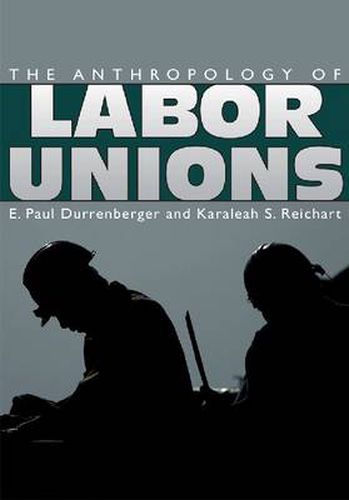Readings Newsletter
Become a Readings Member to make your shopping experience even easier.
Sign in or sign up for free!
You’re not far away from qualifying for FREE standard shipping within Australia
You’ve qualified for FREE standard shipping within Australia
The cart is loading…






This book presents ethnographic data and analysis in eight case studies from several very diverse industries. It covers a wide range of topics, from the role of women and community in strikes to the importance of place in organization, and addresses global concerns with studies from Mexico and Malawu. Union-organized workplaces consistently afford workers higher wages and better pensions, benefits, and health coverage than their non-union counterparts. In addition, women and minorities who belong to unions are more likely to receive higher wages and benefits than their non-union peers. Given the economic advantages of union membership, one might expect to see higher rates of organization across industries, but labour affiliation is at an all-time low. What accounts for this discrepancy? The contributors in this volume provide a variety of perspectives on this paradox, including discussions of approaches to and findings on the histories, cultures, and practices of organized labour. They also address substantive issues such as race, class, gender, age, generation, ethnicity, health and safety concerns, corporate co-optation of unions, and the cultural context of union-management relationships. The first to bring together anthropological case studies of labour unions, this volume will appeal to cultural anthropologists, social scientists, sociologists, and those interested in labour studies and labour movements.
$9.00 standard shipping within Australia
FREE standard shipping within Australia for orders over $100.00
Express & International shipping calculated at checkout
This book presents ethnographic data and analysis in eight case studies from several very diverse industries. It covers a wide range of topics, from the role of women and community in strikes to the importance of place in organization, and addresses global concerns with studies from Mexico and Malawu. Union-organized workplaces consistently afford workers higher wages and better pensions, benefits, and health coverage than their non-union counterparts. In addition, women and minorities who belong to unions are more likely to receive higher wages and benefits than their non-union peers. Given the economic advantages of union membership, one might expect to see higher rates of organization across industries, but labour affiliation is at an all-time low. What accounts for this discrepancy? The contributors in this volume provide a variety of perspectives on this paradox, including discussions of approaches to and findings on the histories, cultures, and practices of organized labour. They also address substantive issues such as race, class, gender, age, generation, ethnicity, health and safety concerns, corporate co-optation of unions, and the cultural context of union-management relationships. The first to bring together anthropological case studies of labour unions, this volume will appeal to cultural anthropologists, social scientists, sociologists, and those interested in labour studies and labour movements.